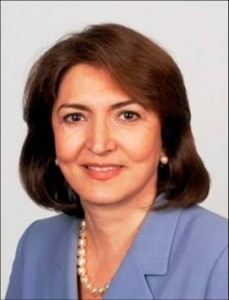Date & Time: Thursday September 9, 2010 – 7:30 PM
Location: Montgomery Community College (Rockville Campus) – Humanity Building (HU), Conference Room 009 ( Get Directions, Campus Map )
Speaker: Dr. Morvarid Alaghmand
“Once foods were fortified with vitamin D and rickets appeared to have been conquered, many health care professionals thought the major health problems resulting from vitamin D deficiency had been resolved. However, rickets can be considered the tip of the vitamin D deficiency iceberg. In fact, vitamin D deficiency remains common in children and adults.”
Michael F. Holick, M.D., Ph.D.
During childhood, vitamin D deficiency causes growth retardation and skeletal deformities. Vitamin D deficiency in adults can precipitate or exacerbate osteopenia and osteoporosis, can cause osteomalacia (bone softness) and muscle weakness, and increase risk of chronic disorders such as cancer.
This lecture will talk about vitamin D and its metabolism, symptoms and causes of vitamin D deficiency and treatment options.
Dr. Morvarid Alaghmand was graduated from National Organization for Development of Exceptional Talents (known as SAMPAD) in Tehran. She studied medicine at Tehran University of Medical Sciences from 1996 to 2003. She performed her Internal Medicine training (residency) at Interfaith Medical Center, affiliated with SUNY Downstate in New York.
Before starting residency, she was involved in research at Interventional Radiology Department in George Washington University Hospital for one year. She is one of the authors of a textbook called “Image-Guided Interventions”. She researched on bone and skeletal disorders and vitamin D deficiency on Asian population referred to Interfaith Medical Center clinic.
Dr. Alaghmand has been practicing as an Internist at Riverside Medical Group in Maryland since July of 2008. She is a diplomat of American Board of Internal Medicine, and is a member of American College of Physicians.
Fee (including dinner): $5 Students, $15 Public

